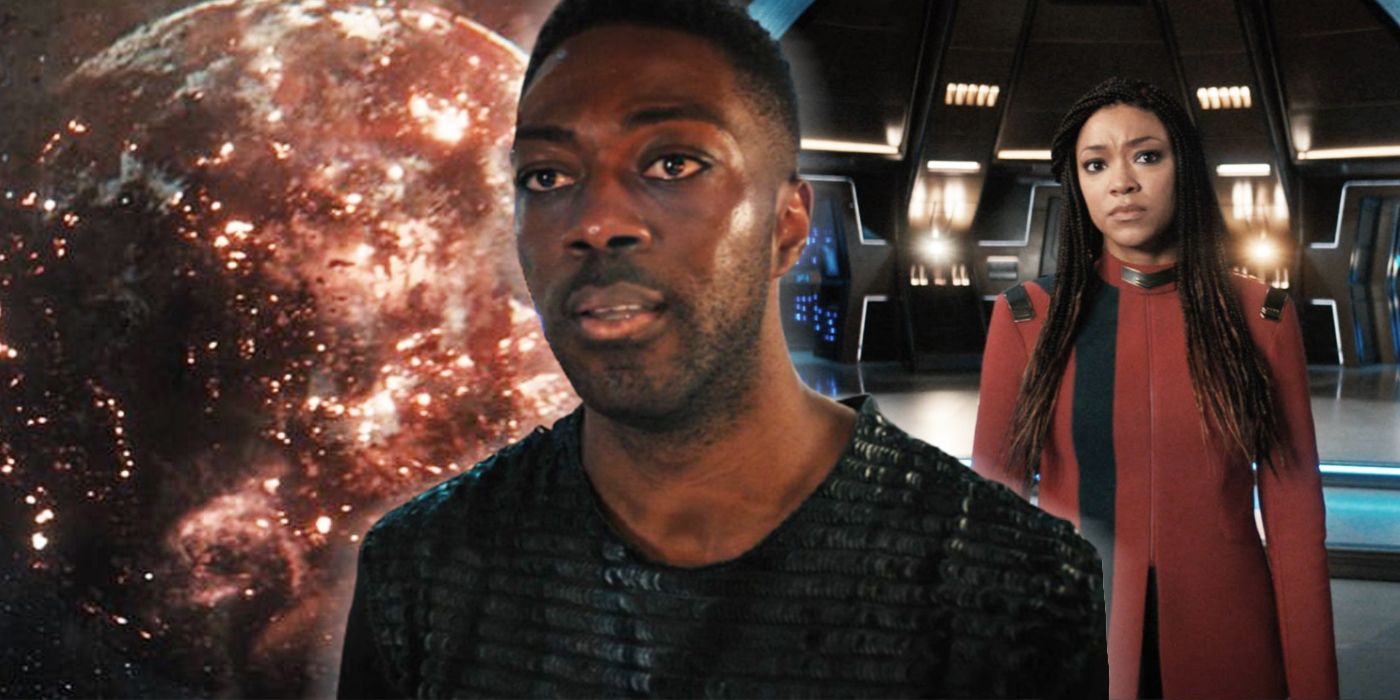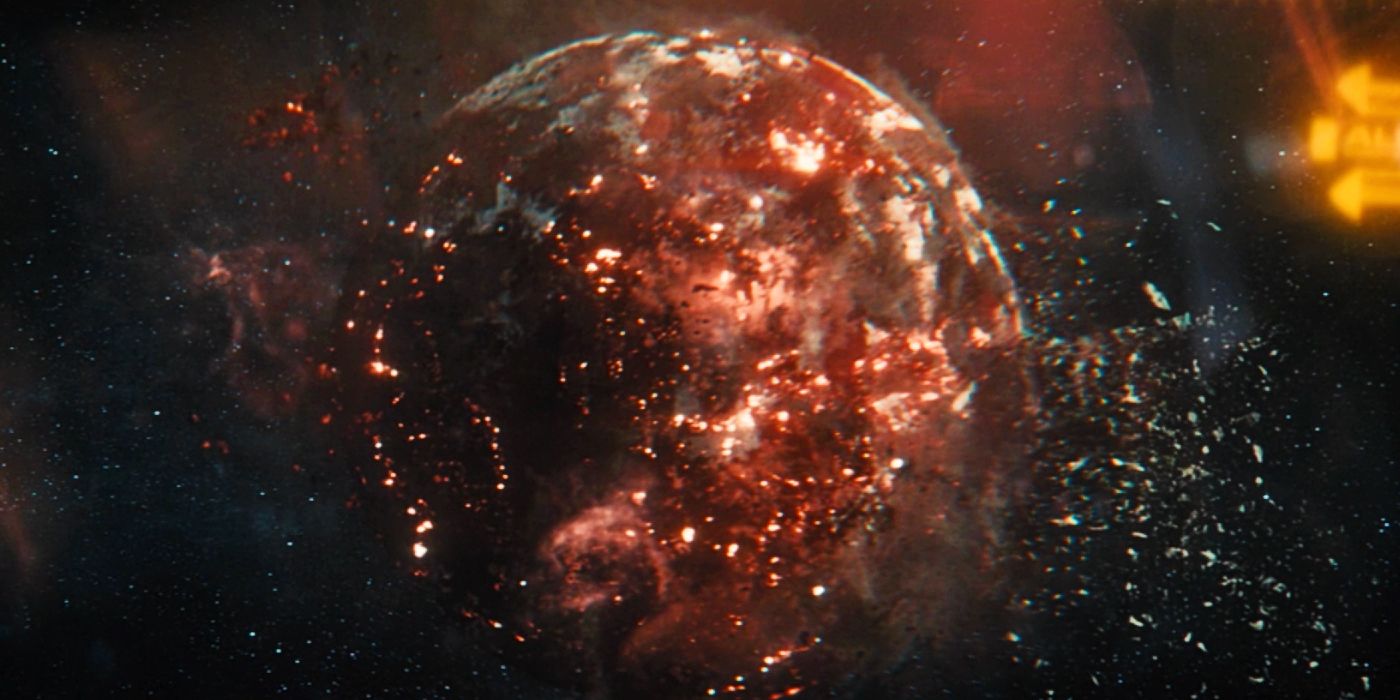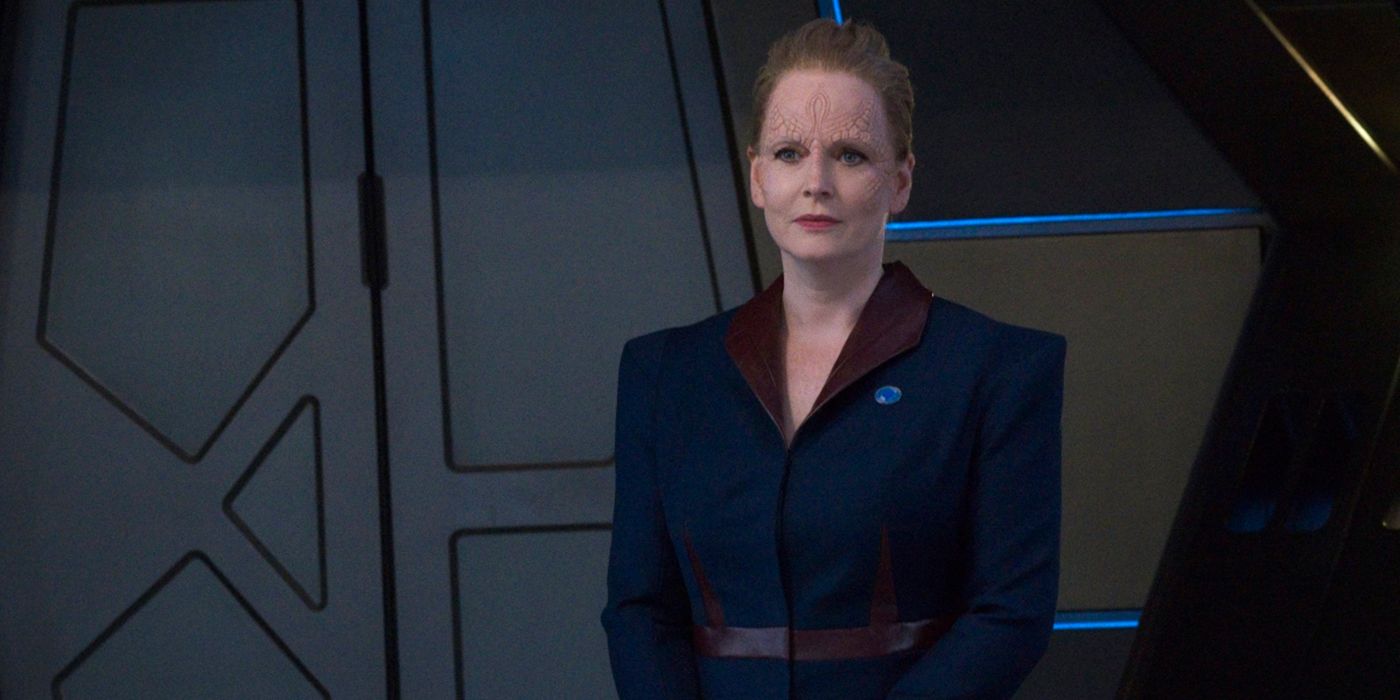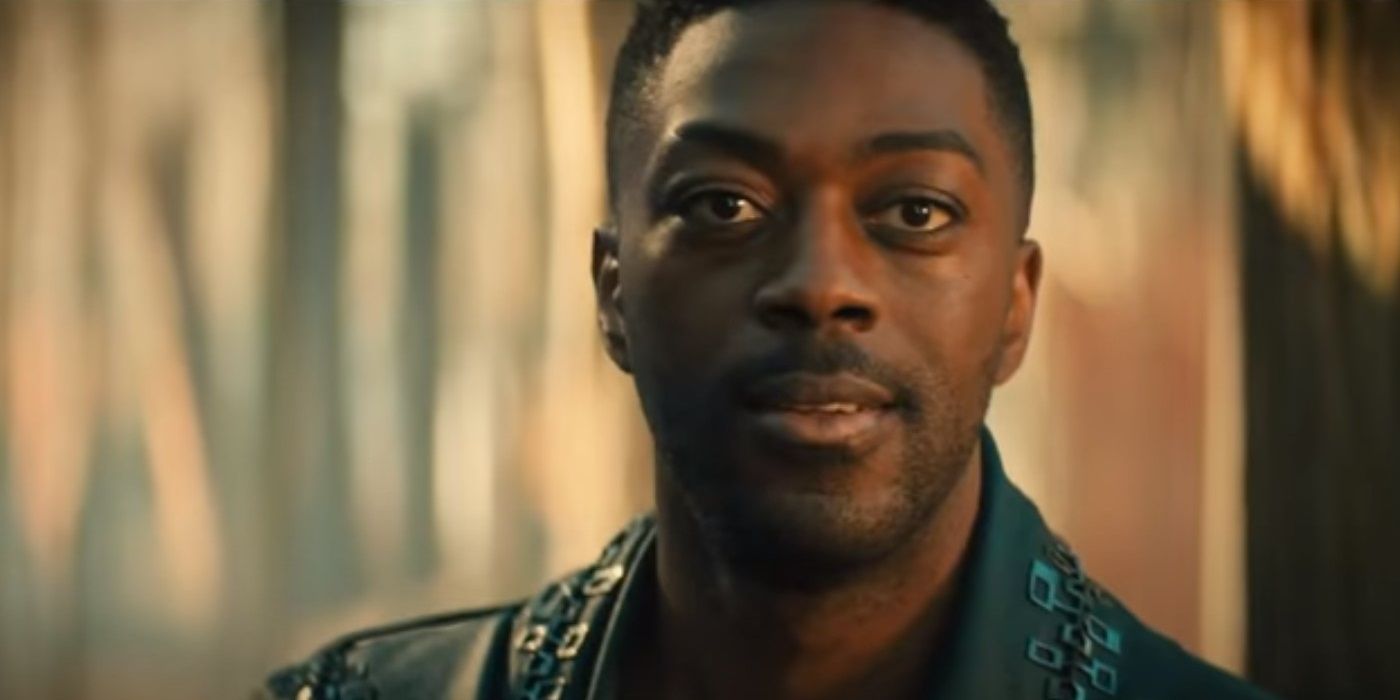WARNING: The following contains spoilers for the Star Trek: Discovery Season 4 premiere, "Kobayashi Maru," now streaming on Paramount+.
The fourth season of Star Trek: Discovery begins with Michael Burnham having scouted the future and solved one of its most crucial mysteries with the help of her crew, and their ship's unique ability to be anywhere in an instant. Their accomplishments are heralded throughout the stars as civilizations that had become protectionist begin to adopt more inclusive policies in regard to the Federation.
"Kobayashi Maru" opens with Burnham and Book engaged in tough, but ultimately successful, negotiations with a disaffected world followed promptly by a ceremony symbolizing the return of the Federation to the galaxy. Discovery is soon dispatched to investigate a call for help that quickly turns into a rescue mission at a time when the galaxy is only just healing from a generations old wound. What they find will be the inciting incident of the season that places the crew in dangerous galactic and political crosshairs.
Without warning, a massive gravitational distortion traveling at exponential multiples beyond the speed of light rips through a deep-space repair station, carrying frozen methane asteroids in its wake. After rescuing most of the station's crew, Discovery learns the true power of the anomaly when they locate the planet Kwejian -- home world of Cleveland "Book" Booker -- hundreds of thousands of kilometers away from where it should be, a ruined volcanic husk thrown from its natural orbit. As the shock settles on the crew, fresh from their accolades and dress uniforms, the emotional weight of what they witness is absorbed, and the episode ends in heartache and questions.
It has been five months since the Discovery crew determined the cause of the Burn, and made it impossible for the violent dilithium cascade effect to threaten the galaxy once again. During that period the Federation has expanded by a factor of two-thirds, a new shipyard has been built to manufacture top-tier vessels, and Starfleet Academy has accepted its first new class in more than a century. Diplomatic relations between systems with poor experiences in regard to the Federation are progressing, and the Discovery has become the de facto flagship of Starfleet, with Burnham as its captain. A newly elected president, a half-human, half-Cardassian named Laira Rillak, has grand technological plans for the fleet and the political ruthlessness to see her goals achieved.
With the destruction of Kwejian, Book will have to grapple with the trauma of being one of the last of his people in existence. In addition to potential survivor's remorse on a planetary emotional scale, he may feel pressure to distance himself from Burnham so that the identity of his people survive. The newly minted captain must negotiate her genuine concern for her lover against her responsibilities in determining the cause of the distortion and preventing it from similarly tearing other worlds from the umbilical of their stars. Her ability to separate her emotional needs from her professional obligations have already come under scrutiny from the most powerful individuals in Starfleet, so keeping herself in good stead to prevent any obstruction in her investigations may become more and more of a priority despite her disdain for politics.
It is unclear whether Ni'Var, formerly Vulcan, is one of the Federation's formal allies, but diplomatic ties across the galaxy are tenuous. When Discovery asked the Romulan and Vulcan coalition for help in Season 3, it was met with suspicion and rancor from one of the institution's founding members; the path Rillak has laid out will undoubtedly face additional skepticism from planets that have an even less-favorable view. The new Federation president has demonstrated she is advocating for radical policies reminiscent of climate change discussions concerning the adoption of alternate fuels that will not leave Starfleet as vulnerable as it had been. Among those potential solutions are the development of a bleeding-edge spore drive, and something called a Pathway drive prototype that will power the 11th-generation Voyager.
It is far too early to know with any certainty, but given the show's history of power players experimenting with technology to serve their own agendas, no matter the cost, the president's antagonism to Burnham's reluctance to sacrifice the few for the many may foreshadow her involvement in the distortions. Discovery Season 4 has already laid the skeletal underpinnings to suspect Rillak of more than shrewd political acumen. Her knowledge of the Kobayashi Maru, the Starfleet Academy training exercise, under the vague explanation that her father ferried her around the galaxy, seems an intentional avoidance of a more complicated story. And a Pathway drive that would replace warp technology might attempt to harness gravity in some way, inadvertently leading toward the ripple that battered Kwejian to pieces.
The president's assertion that Burnham isn't prepared for serious command responsibilities because she risked most of their lives for the chance to save everyone's lives gave a glimpse into Rillak's willingness to sacrifice for the greater good, as she would have it defined. Energy independence, and the power that would represent to the Federation, may very well fall within that definition, especially as diplomatic relations remain tenuous. An innovation on that scale could convince holdouts the Federation is worth believing in, and herald a new age similar to the warp-engine revolution centuries earlier that inspired Vulcans to make First Contact with Earth.
The destruction of Kwejian may even be used as an opportunity to build fidelity around the cause of unification under the Federation. Politically, and disingenuously, the president could argue that, because of the Federation's spore drive, they were able to save almost all of the repair station's crew. Because it is a unique technology, other planets could be evacuated, or given some warning, as they track the distortion's trajectory; as Federation members, all planets within the charter could share in these advantages -- all of it weighted by the very real example of Kwejian in their collective memory.
In true Discovery fashion, a season premiere raises the stakes for one interconnected investigation that links everything to a common theme, and problem to be solved -- one that usually threatens galactic war, the future annihilation of all life in the galaxy, or, in this case, the newfound legacy of one of the galaxy's most heralded institutions. The United Federation of Planets was the glue of the galaxy for centuries, and inspired peace, cooperation and prosperity for generations. But Kwejian's destruction threatens to upend much of the reclamation project in ways that may be unexpected but ultimately compelling.




